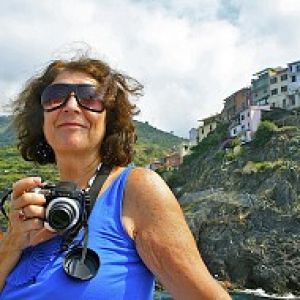Gonder
Left at 8.30 for Gonder. We stopped for a brief view overlooking the town, near Haile Selassie’s palace but we were not allowed near it and did not see it. The good asphalt road headed north on the western side of Lake Tana. The road was busy with tuctucs, the main mode of transport, and of course many people on foot.
Ethiopia is so heavily populated in the countryside that there were huts all along the road with many working in the fields. However it was Saturday so a lot were heading to the nearest small town to market. The older men carry sticks across their shoulders and the women carry stuff on their heads. The land at first was flat and floods in the rainy season so now rice is grown. Lentils and chick peas were also grown. Two days a week the devout Christians eat a ‘fasting’ menu which means no animals produce- in effect a vegan diet twice a week. Later, as we drove higher, the crop was sogrum (for making beer). We saw some volcanic plugs - yesterday our path was lava. We reached Gonder, a city of 200,000, set in a bowl of hills, in time for lunch and had a nice buffet meal in a pleasant place full of tourists, mainly French and German. I had the fasting menu - spicy lentils, spinach, chickpea sauce which is spicy and the local bread, injera.
We then visited the Gonder castle complex, a UNESCO site, started by Emperor Fasiladas in the 17th century, and made the capital in 1636. It lay at the crossroads of 3 major caravan routes, at the confluence of two rivers, and was near rich sources of gold, civet, Ivory (in addition to slaves). Each generation built another palace on the complex. We had an excellent young local guide to take us round and explain about the history. However in the 1880s the Sudanese dervishes looted the place, and further damage was caused by the British bombing it in WW2 during the liberation campaign against the Italian occupation. It’s now a peaceful spot with only a few small groups of tourists when we went, and some locals.
Our next stop was Debre Bethan Selassie, a beautiful old church dating back to the 18th century. The ceiling is eye-catching, with its rows and rows of wide-eyed cherubs, 135 in total. The usual bible stories were depicted on the walls, and there was a Bosch-like depiction of hell. On one side is apparently a representation of Mohammed. The church was surrounded by a large stone wall with 12 rounded towers, representing the apostles. The entrance gate represents the Lion of Judah.
Our last visit was to Fasiladas’s bath. He rode the 2km from his castle to this large rectangular pool, in the middle of which is a lovely old building. It was a peaceful spot, where snakelike tree roots grow through the outer walls, reminiscent of Angkor in Cambodia. The only water in the bath was from recent rain, but it is filled for the Timkat festival in January.
Our hotel, Goha, is said by Nagusse to be the best in the area. It is set on a hilltop overlooking the town, with the rooms set around, built into the hill. Ours is so far from the main building we have a guard sitting in a tin shed outside. WiFi might exists in the restaurant which is a good long walk up the hill from our room, but it is off after 10pm. I’m about to discover whether the very smart bathroom has any hot water.
The two top pictures are the Castle, then the church and at the bottom the baths.
- 16
- 1

Comments
Sign in or get an account to comment.


